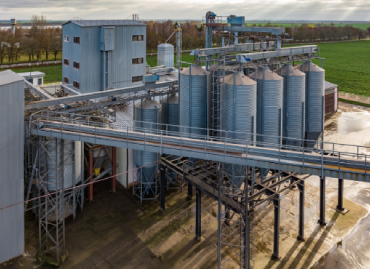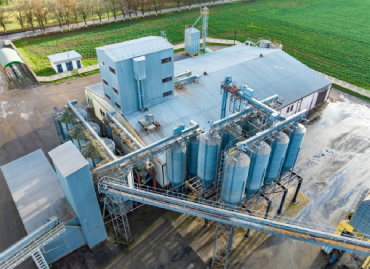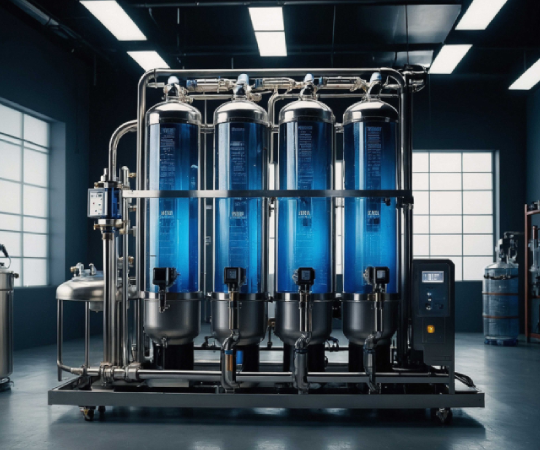- By Admin
- 12 Sep 2025
- ETP Plant
Konark WaterDoc: Advanced Hospital Water Management Systems for Safe, Sustainable Operations
Encompassing major cities, it has witnessed a significant expansion in healthcare infrastructure over the past decades. Multi-specialty hospitals, research institutes, and medical colleges are proliferating, providing advanced medical services to millions of people. With this rapid growth, the demand for reliable and safe water supply systems and efficient. wastewater management solutions has increased dramatically. Hospitals now require integrated water treatment strategies to maintain hygiene, prevent contamination, and meet stringent regulatory standards, ensuring that patient care is not compromised.
"Water is the essence of life, and in hospitals, it becomes the backbone of care. Proper treatment, management, and reuse of water ensure patient safety, operational efficiency, and environmental responsibility, making every drop counted for sustainable and high-quality healthcare delivery."
The Role of Water in Hospital Operations
Water is fundamental to hospital operations, serving multiple functions that extend beyond basic consumption. Clean and treated water is vital for sterilizing surgical instruments, maintaining patient hygiene, supporting laboratory tests, and enabling the smooth operation of boilers and HVAC systems. Hospitals also rely on water for daily sanitation, laundry services, and even food preparation. In pathology and diagnostic laboratories, ultra-pure water is essential for accurate testing and experimental procedures. Any disruption in water quality or availability can impact healthcare delivery, making water management an essential aspect of hospital infrastructure planning.


High-Volume Wastewater Generation in Hospitals
Hospital activities generate significant volumes of wastewater daily, arising from toilets, surgical units, diagnostic laboratories, kitchens, and laundry services. This wastewater is a complex mixture, containing biological contaminants, disinfectants, chemical reagents, and pharmaceutical residues. Bodily fluids, blood, surgical waste, and lab effluents add to the potential hazards. If not treated correctly, such wastewater can have severe environmental and public health consequences. Understanding the sources and characteristics of hospital wastewater is crucial for designing appropriate treatment systems that can safely handle both domestic and chemical-laden effluents.
Diverse Wastewater Types and Treatment Challenges
Hospital wastewater is characterized by its diversity and toxicity. Pathogens, chemical residues, and pharmaceutical contaminants coexist in variable concentrations. Laundry effluents, cleaning agents, laboratory chemicals, and radiology department waste further complicate the treatment process. This variability necessitates careful categorization, pre-treatment, and customized approaches to ensure safe disposal or reuse. Failure to address these challenges can lead to environmental pollution and potential health risks. Effective hospital wastewater management requires advanced technologies capable of treating both conventional and hazardous waste streams efficiently.
Dedicated STP and ETP Systems
Hospitals adopt dedicated Sewage Treatment Plants (STP) and Effluent Treatment Plants (ETP) to manage wastewater effectively. STPs primarily handle domestic wastewater, including toilets, kitchens, and laundry effluents, whereas ETPs focus on chemical-laden wastewater from laboratories, ICUs, and operating theaters. These treatment systems typically incorporate multiple stages such as filtration, biological treatment, chemical neutralization, and disinfection. Technologies like activated sludge systems, membrane bioreactors (MBR), and UV sterilization are widely implemented. Properly treated water can be discharged safely or reused for non-potable purposes, contributing to sustainability while ensuring regulatory compliance.
Advanced Technologies for Water Reuse
Modern hospitals increasingly implement Reverse Osmosis (RO), Ultra-Filtration (UF), and Membrane Bioreactor (MBR) technologies to treat and reuse water. Recycled water is commonly used for flushing systems, floor cleaning, gardening, and HVAC operations. These technologies not only improve operational efficiency but also reduce dependence on freshwater sources, lower utility expenses, and promote environmentally responsible practices. Automation and remote monitoring further enhance system efficiency, providing real-time performance data and ensuring that compliance standards are continuously met.
Konark WaterDoc's End-to-End Solutions
Konark WaterDoc provides comprehensive hospital water management solutions, offering customized systems tailored to facility size, wastewater type, and regulatory requirements. The process begins with a detailed site audit, identifying water consumption patterns, wastewater characteristics, and operational priorities. Based on this assessment, Konark WaterDoc designs and implements STP, ETP, WTP, and RO systems that are reliable, efficient, and fully compliant.
Design, Installation, and Maintenance
From conceptual design to commissioning, Konark WaterDoc manages every project phase meticulously. Installation is conducted using high-quality equipment and advanced treatment technologies. After commissioning, the company provides operator training, Annual Maintenance Contracts (AMC), and remote monitoring support to ensure long-term efficiency. This integrated approach guarantees that hospitals can maintain high water quality standards while optimizing operational costs and reducing environmental impact.
Sustainability and Compliance
Water conservation, reuse, and sustainable management are integral to Konark WaterDoc's approach. Hospitals benefit from solutions that minimize chemical usage, optimize energy consumption, and reduce overall water wastage. By deploying advanced treatment systems and customized solutions, hospitals can meet stringent local and national regulatory standards, ensuring patient safety and environmental responsibility. Konark WaterDoc's expertise enables healthcare facilities to achieve compliance without compromising operational efficiency or service quality.
Real-World Impact and Operational Efficiency
Hospitals that implement Konark WaterDoc solutions experience measurable improvements in water quality, operational efficiency, and sustainability. With automated monitoring and real-time data access, hospital staff can quickly respond to anomalies, reduce downtime, and ensure continuous compliance. By leveraging modern technologies, hospitals can conserve water, manage hazardous effluents, and reduce operational expenses, ultimately enhancing patient care and institutional credibility.
6. Summary / Conclusion
Effective water management is crucial for hospital operations, directly impacting patient safety, hygiene, and regulatory compliance. Hospitals face complex wastewater streams requiring advanced treatment and reuse technologies. Konark WaterDoc offers end-to-end solutions, including STP, ETP, WTP, and RO systems, tailored to hospital needs. Leveraging MBR, UF, RO, and automated monitoring, the company ensures water is treated, reused, and managed efficiently. Customized audits, operator training, and AMC services further enhance operational reliability. Partnering with Konark WaterDoc enables hospitals to provide sustainable, safe, and compliant healthcare services while reducing environmental impact and operational costs.































































